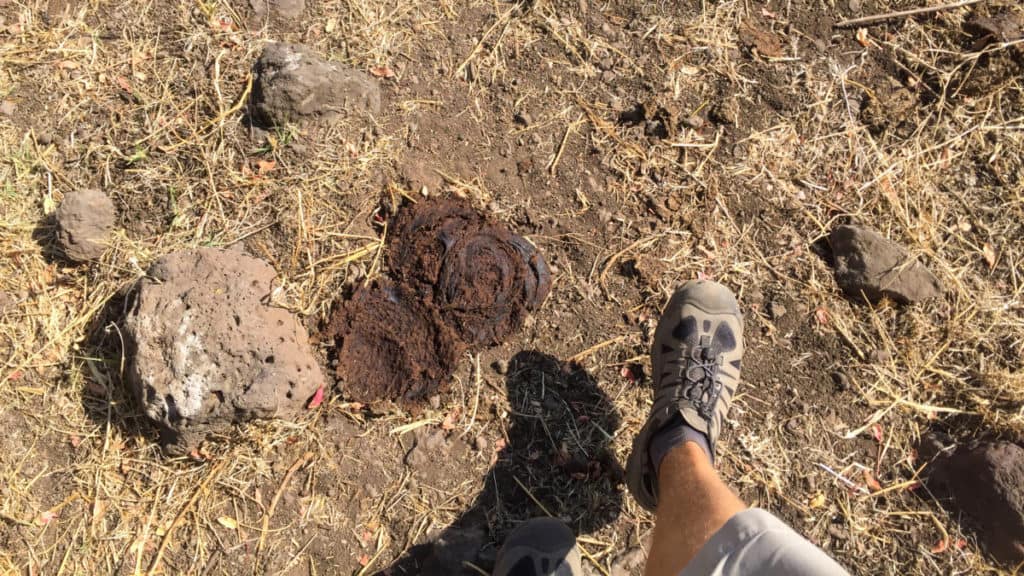
My first port visit in the Navy was to Brisbane, Australia. One of the things on my mind was what souvenir I should get. I wanted something unique, cheap, and easily portable. I also wanted something I could find in other countries because I was going to create a collection. My first idea was dirt. Physically taking the land home is certainly a unique idea, but not the greatest.
So, can you bring sand back from the Holy Land? Yes, but you will need to comply with US Customs and Border Patrol regulations. You can certainly hide any sand you bring back, but being transparent is the best policy.
Leaving Israel is a lengthy and tedious process. However, the main concern with Israeli customs is terrorism and illegal exportation of antiquities and commercial goods.
The main concern with US Customs is bacteria and micro-organisms which live in soil. Soil carries the means for vegetation to grow. Sand is a subsection of soil but has a considerably smaller amount of organisms, if anything at all.
What does Israeli Customs have to say about sand?
When it comes to departure, the Israeli government has a common theme across all their official websites. You must declare goods you are exporting to sell. And don’t take antiquities without permission.
There is nothing to be found on the topic of soil, though.
Israeli Customs is mostly interested in the exportation of goods for commercial sale. As with any business, there will be taxes and regulations. But if its a gift, there are no issues.
The more pertinent issue Israeli Customs is interested in is security. When you exit the country, particularly through the Ben Gurion Airport, you will go through an extensive security apparatus.
The first level of security is an interview by a security officer. They will want to know who you came in contact with? Did you visit Palestine and make friends with anyone desiring to do harm to Israel?
After you get your boarding pass, your checked bags will be searched by customs personnel. When you enter the security zone, your carry-on bag will be searched in front of you.
Customs personnel are looking for two things.
- Weapons or indications of nefarious activity hostile to the nation of Israel, and
- Illegal contraband such as undeclared antiquities as defined by the Antiquities Law of 1978.
After your carry-on is searched you will then have your shoes and hands swiped for explosive residues.
Needless to say, Israeli customs doesn’t care about soil. However, some artifacts are made from soil and rock.
What does the Israeli Antiquities Authority have to say about sand?
In 1948 the Israeli Antiquities Authority was established, and in 1978, Israel enacted a law regarding the treatment of antiquities.
According to the Antiquities Law of 1978 (direct link to mfa.gov.il), antiquity is defined as:
- an artifact produced before the year 1700 AD;
- a human-made object of historical value made after the year 1700 AD, and declared by the Minister of Education and Culture to be an antiquity; or
- a biological fragment dating from before the year 1300 AD.
When you visit sites along your tour, you will often find ostraca, tiny shards or remnants, of ancient artifacts. Most pieces come from things such as pottery. Finding ostraca on the ground is how archaeologists discover these sites. It’s a sign of a buried civilization.
Many ancient artifacts were made from clay, but also stone. For this reason, I would stay away from stones or shards of rock. If you want to take Israel home with you, stick to sand.
Soil is a natural part of the environment. However, rocks or pieces of stone could easily come from an ancient building or artifact. You should ask yourself, “can I definitively prove this is not an artifact?” And “can Customs make an argument that it COULD be an artifact?” Always remember, the burden of proof will be on you.
In some parts of Israel, such as the Dead Sea, you can actually buy a small decorative container of sand. The problem is that you won’t know if it’s real sand from Israel. These containers are recognizable to customs upon exit.
What does US Customs and Border Protection have to say about sand?

US Customs and Border Protection, or USCBP, has a long list of items they want travelers to declare upon entry into the United States. Soil is on the list and falls under the category of agriculture.
The main concern USCBP has with soil is that it may contain microorganisms that aren’t native to the US. The soil could contain animal and plant borne bacteria, viruses, and diseases. Maybe you walked around a field inspecting crops infested with a unique virus. Or you worked on a farm with animals infected with Mad Cow disease.
Spores from effected plants can easily spread through a field by winds or rain. Excrement from sick animals can soak into the soil and spread as other animals, and people walk around.
Another aspect of the Agriculture category is the import of fruits and vegetables. For example, you buy some dates in the market and want to bring them back. That’s technically considered the importation of agriculture.
On their website, USCBP states (direct link to cbp.gov), “Pure sand, such as a small container of decorative beach sand, is usually allowed. Always check with the permit unit in advance for details.”
On the Transportation and Security Administration website (direct link to tsa.gov), they note that sand is “OK” to have in both your carry-on and checked bags.
Guidance from a veteran traveler.
When I was in Australia on my first port visit with the Navy, I thought about taking dirt with me. I imagined having a collection of small containers of soil from every country I visit throughout my life. But there were a few things which made this plan unappealing.
First, what if an overzealous customs agent removed the container from my bag? Or what if the container broke open in my bag and the soil got dispersed and became difficult to reconstitute? What if I couldn’t find a good container?
Second, and more importantly was, how was I going to display my collection of soil? Would it be a hodgepodge of containers on a shelf? Like a salt-and-pepper shaker collection. Or an action figure display. Maybe I would mix all the soils into one big container. I could never go back if I didn’t like it, though.
In the end, I chose postcards. They’re cheap, easy to find, and no one is going to deny me from sending them. I write the name of the city and country I visited and the dates on the back. Buy a stamp. Then drop the card in the mail. I usually spend no more than a couple of dollars. Sometimes I send several postcards to myself, so I can have a variety to choose from someday. I also buy a few to take with me in case the others get lost in the mail.
At first glance, sand appears like a unique and interesting memento, but what are you going to do with it? It’s not as lame as mugs, shot glasses, or salt and pepper shakers. But in the end, you’ll have to get creative when it comes to displaying it.
Better souvenir options.
There are plenty of antiquity dealers in Jerusalem where you can buy authentic artifacts. They will come with a certificate of authenticity as well. Israeli customs will recognize these certificates, and there will be no issues.
When buying an authentic artifact, verify that the seller is a licensed artifact dealer. The Israeli Antiquities Authority requires dealers to register and routinely report their inventory with the government.
Owning an authentic artifact is often easier to display in your home and will definitely tell a story.
For example, a widow’s mite coin will cost you around $50. Sometimes they come in decorative boxes. The significance behind the widow’s mite to the Christian community comes from Mark 12:41-44 and Luke 21:1-4. Jesus tells of a widow who gave more than anyone else even though all she gave were two small copper coins.
There are many other artifacts you can buy besides a widow’s mite. You are taking the time and spending the money for what could be a once in a lifetime opportunity. Sand is a logical choice, but there are many other thoughtful memento ideas out there.
Other informative links
http://www.antiquities.org.il/asfan_pre_eng.asp
https://israel.travel/goisrael/immigration-customs/
https://www.aphis.usda.gov/aphis/resources/traveler/intl-travel/soil/soil


